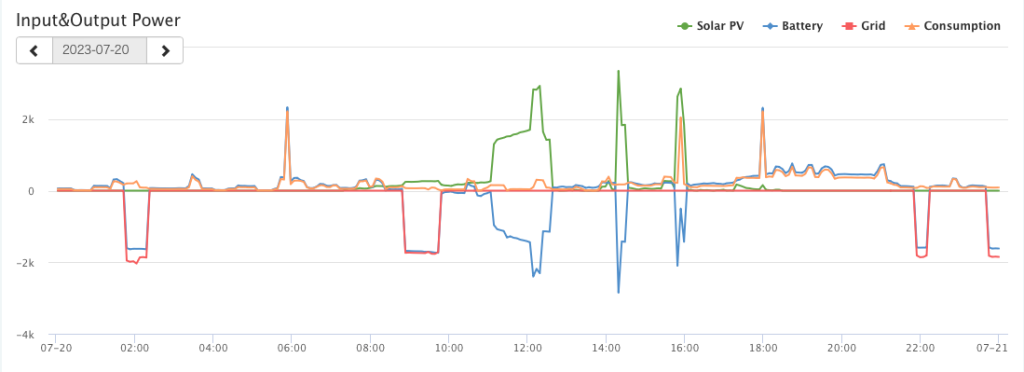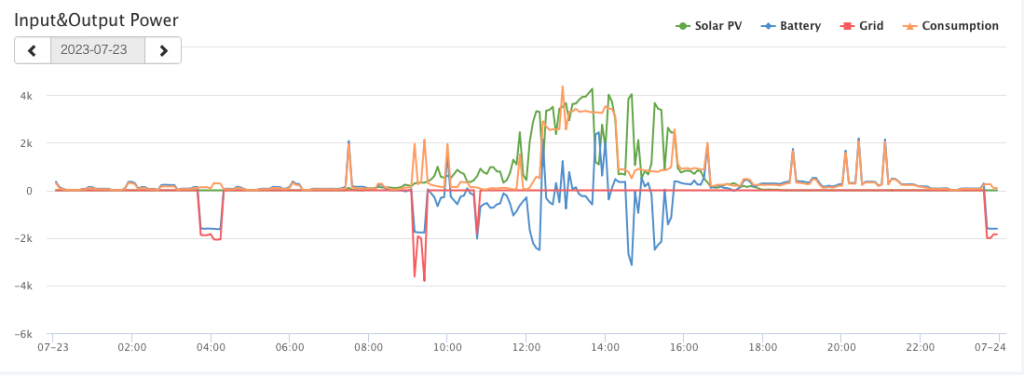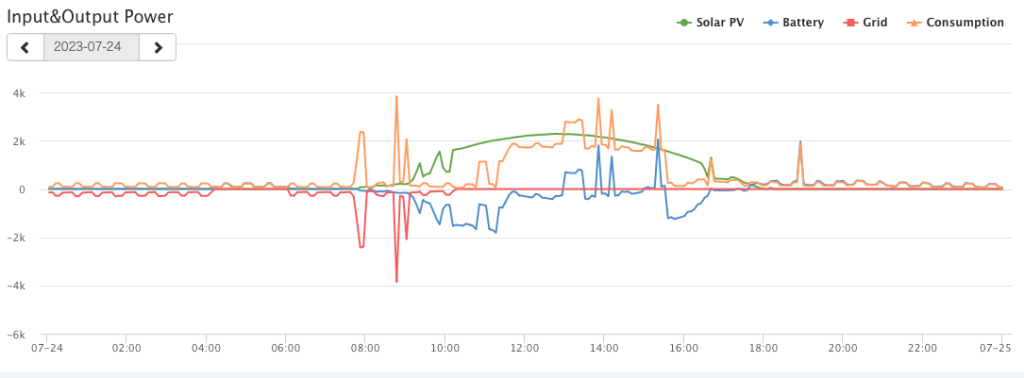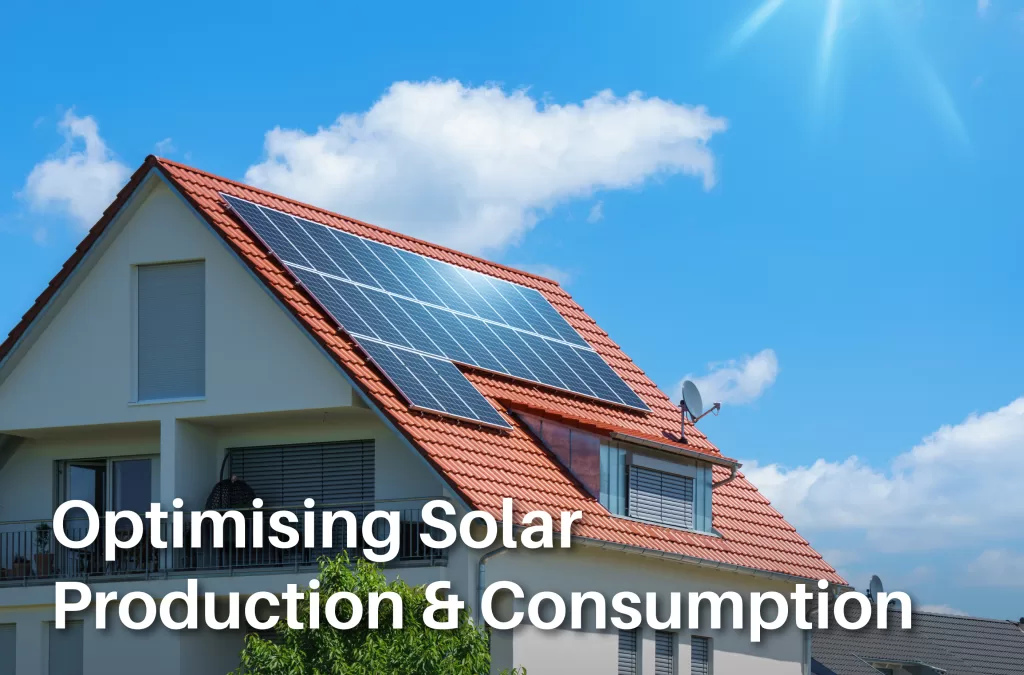Optimising your use of solar requires matching your load as closely as possible with your solar production. When first installing solar panels it is unlikely that peak production will match the times of peak consumption exactly. This is particularly the case when peak consumption occurs at times such as before breakfast and dinner when the sun is not shining. Figure 1 shows a production & consumption graph for a completely un-optimised system. Loads come on at random times and very little solar is utilised. There is also an imbalance between the size of the solar system and the loads powered – solar power is being wasted.

How do we ensure that we get the maximum power possible out of the solar panels?
Figure 1. Underutilised Solar Production
The simple approach is to ensure that as much consumption as possible takes place during daylight hours. It is also important that the right types of loads are powered by the solar system. By this I mean loads that are relatively high consumers and can be set to run at specific times, e.g a pool pump or geyser element that can be set to a schedule on a timer. Batteries can also be utilised to shift the solar production – the battery is charged by solar during the day and provides power to the loads at night. Figure 2 shows a system that has most high loads shifted to day time, with the battery being charged (the blue line below 0 on the graph) when excess capacity is available from the panels. Some solar energy is not being utilised in the afternoon, which indicates there may be slightly more solar capacity than required – more load could be powered from 14:00 to 16:00.

Figure 2. Improved matching of solar production & consumption
If the solar system has battery backup the idea is to charge the battery first thing in the morning – once the battery is full and solar production dips start running loads that can be set on a timer and have a predictable and constant power draw, such as a pool pump. These loads can be increased as the solar production rises through the day, so replace the pool pump with the geyser, or run a borehole pump simultaneously with he pool pump to increase the total power draw. Taper off the draw into the afternoon, so that there is time for the battery to charge up before sunset.

This will provide stored solar power to run night time loads.
Figure 3. Optimised solar production and consumption
Figure 3 shows an optimised solar graph – as the sun comes up it charges the battery, once the battery is full at around 10:30 the load is increased to be covered by the solar production (in this case the geyser kicks in). The geyser runs until about 15:00, by which time the water will be at 55 degrees. The spikes during the day are random appliances such as a vacuum cleaner or toaster, etc – although the spikes exceed the solar production, the load is topped up by the battery. From 16:00 the panels charge the battery for the night to come. In this case the battery carries the load until the next morning.
If the capacity of the battery is increased it could carry the load right up until the solar kicks in, meaning utility won’t be used at all – it essentially becomes a backup service and the solar system the primary source of power. Being able to time shift your loads by use of timers or batteries is essential to getting peak performance out of your system. This applies to “off-grid” systems that do not feed power back to the utility – that is an entirely different scenario, where the utility acts as a “battery”. Further articles will look at grid-tied systems.

